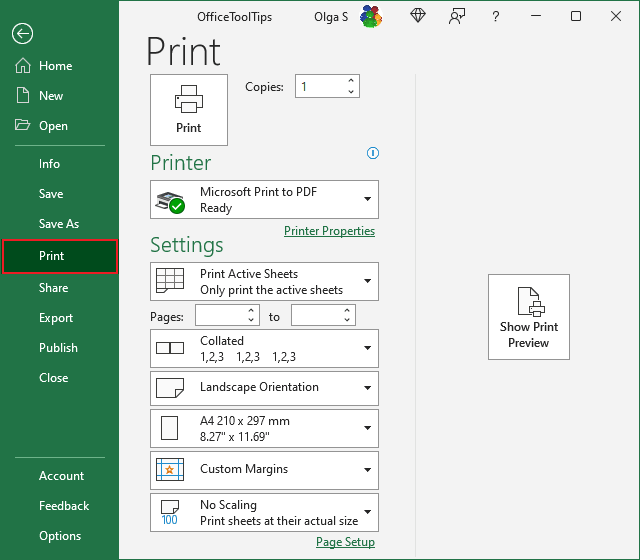5 Tips to Print Large Excel Sheets on One Page

The challenge of printing large Excel sheets on a single page is a common headache for many. Whether it's for a project review, team meeting, or presentation, getting all your data to fit neatly onto one sheet of paper can seem daunting. However, with the right strategies, it's entirely achievable. In this post, we'll explore five essential tips that will help you print your large Excel spreadsheets without sacrificing readability or important data.
Tip 1: Adjust Page Layout and Margins

The first step in printing large Excel sheets efficiently is to optimize your document's layout:
- Page Setup: Go to File > Page Setup. Here, choose the Page tab. Select Portrait or Landscape orientation depending on the shape of your data. Landscape is usually better for wide datasets.
- Margins: Adjust the margins to fit more content. Use Custom Margins if necessary, reducing margins slightly can provide more room.
- Scaling: In the Page tab, select Fit to: instead of Adjust to:. This option will shrink the document to fit a specific number of pages. For instance, setting it to fit one page wide by one page tall will force Excel to compress everything into a single page.
Tip 2: Modify Font Size and Style

While adjusting the layout is crucial, don't overlook the impact of font size and style:
- Reduce the font size. Going from size 11 to 8 or 9 can drastically decrease the space your text occupies.
- Consider using a sans-serif font like Arial or Calibri, which are typically more compact than serif fonts.
- Change the font style for headers or titles to a bold, slightly smaller size to differentiate them without consuming extra space.
⚠️ Note: Always ensure that the reduced font size is still readable.
Tip 3: Use Shrink to Fit

Excel offers a feature known as 'Shrink to Fit' which can be a lifesaver:
- Select the columns or rows you want to shrink.
- Right-click, choose Format Cells, go to the Alignment tab, and check Shrink to fit.
This will automatically adjust the font size within the cells to fit the cell width. However, this method works best for cells that won't contain much text.
Tip 4: Manage Row and Column Height and Width

Properly managing the width of columns and height of rows is essential:
- Columns: Select the column header, right-click, and choose Column Width. Adjust the width to just fit the longest entry in the column.
- Rows: Similarly, adjust row heights to fit the content. If a row contains only numbers, it can usually be made much smaller than one with descriptive text.
| Element | Adjust | Benefit |
|---|---|---|
| Columns | Width to fit content | Reduces blank space, allows for more data per page |
| Rows | Height to fit content | Increases readability, decreases paper usage |

Tip 5: Hide Unnecessary Data

Sometimes, not all data is required for your printout:
- Hide columns or rows that don't need to be printed by selecting them, right-clicking, and choosing Hide.
- If temporary hiding is not enough, you can also filter your data to exclude rows that aren't relevant to your printout.
By reducing the amount of data shown, you'll fit more essential information onto a single page.
Implementing these tips will streamline your printing process, ensuring that you can get all your vital information onto one sheet of paper without compromising on clarity. Remember, balance is key—ensure that while you're optimizing for space, the document remains legible and professional. With practice, you'll find that printing large Excel sheets on a single page becomes second nature.
To wrap up, printing large Excel sheets on one page requires a combination of adjusting layout settings, optimizing text size, and managing your data presentation. By employing these strategies, you'll be able to present your data effectively and efficiently, making your meetings or presentations more impactful.
Can I print all sheets of an Excel workbook on one page?

+
Generally, Excel is designed to print one sheet per page, but you can manually adjust each sheet or create a consolidated summary sheet to fit all necessary data onto one page.
What if my Excel data is too large even after scaling?

+
If your data is still too large, consider splitting it into multiple sheets or using Excel’s grouping feature to collapse and expand data for a more compact printout.
Does the color of the text affect printing?

+
Yes, using lighter colors or white text on colored backgrounds can affect readability when printed in black and white. Stick to dark text on a light background for best results.